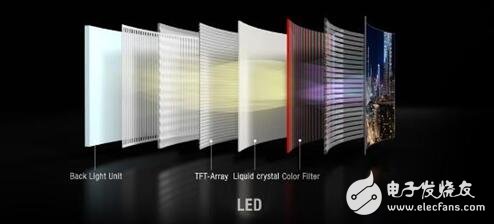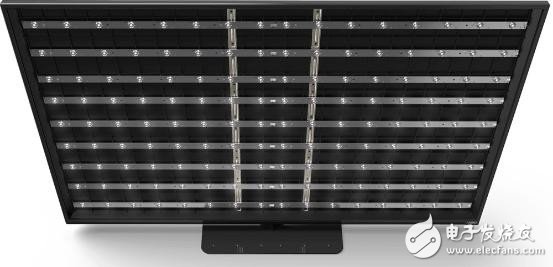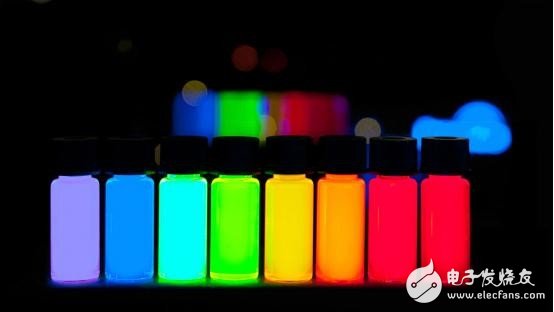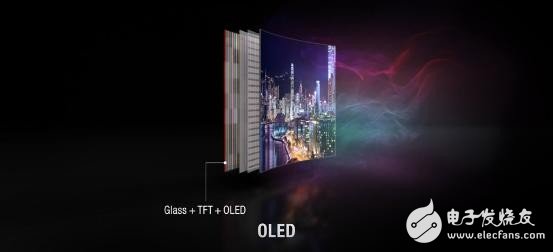LCD and OLED are two completely different display technologies, and are currently widely used in smartphones and flat-panel TVs. In addition, there are old technologies like plasma that once existed in the TV field, but now they have gradually disappeared. At present, most users can only choose between these two display panel products, and if you do not know how to choose, then this article will tell you some basic knowledge, and tell you the difference between LCD and OLED, and tell you How to pursue a balance between demand and budget.

What is LED?
LED is a light emitting diode. These are small solid-state devices that generate light due to the electronic movement of semiconductors. Now as the preferred solution for the backlight of liquid crystal displays, the size of light-emitting diodes is much smaller than that of compact fluorescent lamps and incandescent lamps, but their brightness is very bright. However, LEDs are not small enough to be used as a single pixel of a TV-they are too large. This is one of the reasons why LEDs are only used as backlights for LCDs. Each LED illuminates a small cluster of pixels.
What is OLED?
OLED stands for Organic Light Emitting Diode. Quite simply, OLEDs are made of organic compounds and illuminate when powered. Compared to LEDs, this may not seem like a big difference, but unlike LEDs, OLEDs can be made very thin, flexible and very small. In fact, OLEDs can be so small that they can be used as individual pixels, with millions of pixels occupying the TV screen, lighting and completely independent shutdown. Because of this flexibility, when OLED pixels are turned off, they are completely black.
LCD display

The whole process of LCD is called Liquid Crystal Display, which creates various colors based on white light passing through color filters. After the white light passes through, it will form basic colors such as red, green, and blue, and the light passing rate of each pixel is controlled by the current, thereby controlling the color of the pixel.
In the LCD display, it is a very difficult thing to completely block the white light to display black, and there will always be some light leakage phenomenon, and this is why most black night display can not show real black s reason.
Passive and active matrix
LCD displays have been used since the 1980s, and are used for the first time on "portable computers". These screens have a "matrix" arrangement of pixels and are divided into active and passive matrices. The active matrix technology is more advanced and allows more detailed control, and has a faster switching speed than the passive matrix. The active matrix technology was first introduced using the TFT-matrix matrix screen, but later there were more variant technologies, but basically the same working principle, and the cost was continuously reduced.
LCD backlight
All LCD displays require some form of white backlight, and as time goes on, backlight technology is constantly improving. The purpose of the backlight is higher brightness, more uniform illumination, and the display screen is smaller, thinner and lighter.
The LCD screen originally used CCFL backlight, but now it has been changed to LED backlight. In addition, some LCD screens have not only used white backlighting, but even achieved a more difficult purpose by combining a specific color LED backlight with white light.

Although the backlight comes from the liquid crystal layer, most of the LED backlight light source comes from the edge of the screen, usually at the border, and this design can make the screen thinner and flatter.
TV products usually do not have such high requirements for thickness, so they will use the overall uniform backlight method, and such light can be more uniform, and the backlight can be adjusted locally.
LCD IPS and PLS

The full name of IPS is In-Plane Switching (also called Super TFT), which is a variant of LCD display. IPS can provide better color accuracy and a wider viewing angle. The ordinary LCD display usually displays the best fresh fruits only in front of the screen.
IPS can completely reproduce the color effect within the range of 178 degrees, and will not be affected in any way. This is why most touch devices now use IPS displays. That's right, when the traditional LCD display is pressed with your finger, it will have a strange effect. I believe everyone has a similar experience.
At the same time, there are more improved versions of the IPS technology itself, including Super-IPS (S-IPS), Advanced Super IPS (AS-IPS) and IPS-Pro. Although not all IPS panels have the best results, but In general, IPS is better than traditional LCD panels.
The PLS (Plane Line Switching) is also a technology similar to IPS and is a patent of Samsung. Samsung said that this screen has better brightness and more efficient production costs, but it is still uncertain, because the absolute leader of IPS displays on the market is LG.
LCD + quantum dot

Quantum dots are a technology that can improve the color and hue of LCD screens. Semiconductor nanobody quantum dots can absorb a specific spectrum, which usually depends on their size. And this attribute can be utilized / create better colors, such as red, green, and blue, which will give users more saturated colors.
Quantum dot technology has recently been enthusiastically sought after by the market, and even has the strength to compete with OLED, the latest technology. However, the current quantum dot technology only exists in high-end LCD TVs, but I believe it will gradually become popular over time.
OLED screen

The full name of OLED is Organic Light EmitTIng Diodes, and each pixel emits light without a separate backlight or color filter. Each OLED pixel can be assigned red, green, and blue colors, and now manufacturers have added yellow, but the principle is the same.
Due to the special properties of OLED, it is not necessary to cover the light source like LCD when displaying black, and only need to make the pixels extinguish and not emit light. This is why OLED displays can bring true "black". The black of OLED is very deep, and the contrast is extremely high. At the same time, when compared with white and other elements, it can even produce amazing effects.
OLED technology first appeared in the laboratory in 1987, and it has become a very popular technology in the field of smartphones. Because the OLED screen is one layer less than the LCD screen, the thickness is controlled to be thinner at a time, and this is particularly important for mobile devices. For TV products, whether to choose OLED products depends on user preferences. However, we believe that the ultra-thin OLED is not a decisive advantage for LCD TVs.
One-to-one comparison
Due to the difference in basic attributes, we can take a look at the direct comparison between two imaging technologies with different principles to give users a more intuitive experience.
Black level: OLED wins
The black level refers to the degree to which the screen can be “black†when displaying the darkest colors. Since technologies such as LCD, DLP, or projection rely on filtering or shielding against white light, it is very difficult to display true black. In fact, it can be said that the LCD screen cannot bring true black at all. After all, no matter how good the shielding effect is, there will still be some light leakage. On the other hand, due to the self-luminous principle, OLED can bring true black as long as the light-emitting mechanism is turned off.
Contrast: OLED wins
Contrast refers to the difference between the brightest white and the darkest black, while LCD has an advantage in brightness (especially in HDR mode), while OLED has the deepest black. Overall, OLED displays usually have higher contrast, because the advantage at the black level will magnify this difference.
Perspective: OLED wins
Perhaps the best IPS screen can be comparable to the OLED display in terms of viewing angle, but most LCD displays are not as good as IPS (especially TVs and smartphones), so in addition to the top IPS display Compared with OLED, the viewing angle performance of LCD panel is slightly worse. In front of the OLED TV, no matter what angle the audience sits in, they can see the content on the screen with high-quality feeling.
Color gamut: OLED wins
In terms of paper parameters, the advantages of OLED in color gamut are not obvious, mainly because LCD panels now introduce quantum dot technology. Basically, the best LG OLED TV and Samsung's top quantum dot LCD TV are comparable in color gamut.
However, usually only the best LCD TVs are comparable to OLED TVs, so overall the color gamut performance is better than OLED.
Brightness level: LCD wins
Since LCD TVs usually use separate backlighting, they generally bring better brightness. In reality, the best LCD and OLED have a gap of about 400NIT in brightness, and overall the LCD is superior in brightness level. Be aware that higher brightness will make the screen have a better visual effect outdoors or indoors during the day.
HDR
The HDR mode can increase the brightness by 1,000 to 10,000 NIT, and the OLED TV with HDR function can now be comparable to the LCD TV in brightness. However, some Sony LCD TVs can increase the brightness to 1000 to 1300 NIT, so in general, the LCD TV brightness is higher.
Color uniformity: OLED wins
Whether it can display various colors on a plane in a uniform manner is a very important indicator. Because the backlight of the LCD screen usually comes from the edge, it is more general in the uniformity of illumination. If the backlight can be evenly dispersed behind the screen, then the discrete backlight can bring better results.
On the other hand, OLED performs much better in this respect. Since each pixel can emit light by itself, there is no need for light source diffusion. In real life, even the OLED display is not completely unified, and even flexible OLEDs appear, but overall it is still better than LCD.
Power consumption: LCD wins
At the same brightness level, LCD consumes less energy than OLED. This is a problem we have to face. For mobile devices, higher brightness means better visibility outdoors, while products like TVs only need to have enough brightness during the day.
On the other hand, the power consumption of OLED panels depends on how many pixels there are, so higher resolution OLED screens consume more power.
Cost efficiency: LCD wins
At present, LCD is the lowest cost display method, but OLED technology is continuously optimized with continuous progress and time. It is unclear the specific cost rate, but in the future, OLED technology will continue to improve, and eventually will continue to optimize and reduce the cost, and eventually comparable to LCD.
Summary: OLED is the best, but still needs development
In general, OLED has won a great deal in the comparison of parameters of image quality, so the future can be said to be a development trend of future display technology. However, currently OLED is still limited by production costs, and the size has also encountered bottlenecks. Unless you have special requirements for this specific parameter of brightness, OLED is stronger than LCD in most of the display parameters.
But the cost is also an aspect that has to be considered. Smartphones are okay. If a large-sized display device like a TV, the price of OLED is almost several times that of LCD. So how to choose depends on your wallet.
For diifferent USB types, micro USB, mini USB, etc. The logo, color or shape can all made as customers' requirement. With more than ten years of experience and capabilities assisting our customers in various industry, ETOP would be confident to be your qualified AVL and reliable manufacturing partner.
Related Products:usb cable,micro usb cable,usb data cable.
Data Cable,Data Flexible Electrical Magnetic Cable,Usb Data Cable,Micro Usb Cable,USB Connector
ETOP WIREHARNESS LIMITED , https://www.wireharnessetop.com